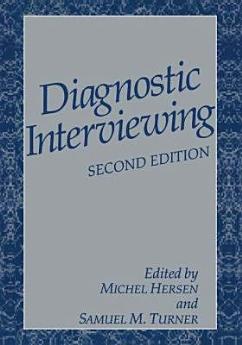Diagnostic Interviewing: Edition 2
About this ebook
About the author
Michel Hersen, Ph.D., ABPP, is Professor and Dean of the School of Professional Psychology at Pacific University He is a Fellow of the American Psychological Association, was awarded a lifetime achievement award from the American Board of Medical Psychotherapists and Psychodiagnosticians, and holds a Diplomate from the American Board of Behavioral Psychology. He is past president of the Association for Advancement of Behavior Therapy. He has written many books and papers, and is the editor of Clinical Case Studies, Clinical Psychology Review, Behavior Modification, Journal of Anxiety Disorders, Aggression and Violent Behavior: A Review Journal, Journal of Family Violence, and The Journal of Developmental and Physical Disabilities. Hersen’s research interests include the assessment and treatment of older adults, single case research, and administration.
Dr. Samuel M. Turner received his Ph.D. in Clinical Psychology in 1975 from the University of Georgia. Following faculty tenures at the University of Pittsburgh and the Medical University of South Carolina, he joined the University of Maryland in 1998. He is Professor of Psychology and Co-Director of the Maryland Center for Anxiety Disorders (MCAD), a clinical research center for the study of anxiety in adults and children. The Center is located within the Clinical Program of the Department of Psychology. Dr. is a Diplomate of the American Board of Professional Psychology (ABPP) in Clinical Psychology and in Behavioral Psychology; and a Fellow of the American Psychological Association and the American Psychological Society. In 1997, he was the recipient of the American Psychological Association Award for Distinguished Contributions to Professional Knowledge and the 1998 recipient of the Distinguished Scientist Award from the Association of Medical School Psychologists. He currently serves as an Associate Editor of The American Psychologist and on the editorial board of numerous scientific journals.






